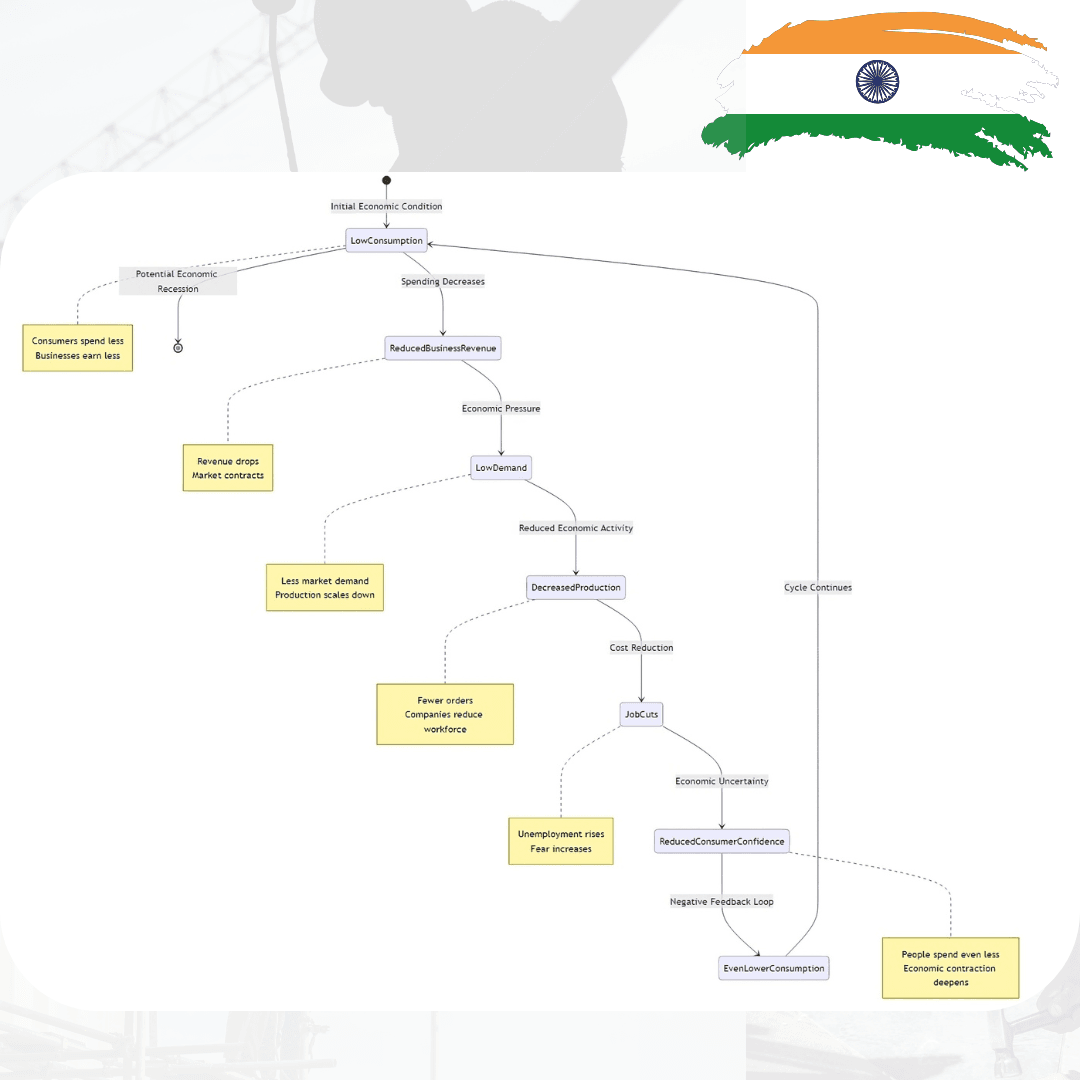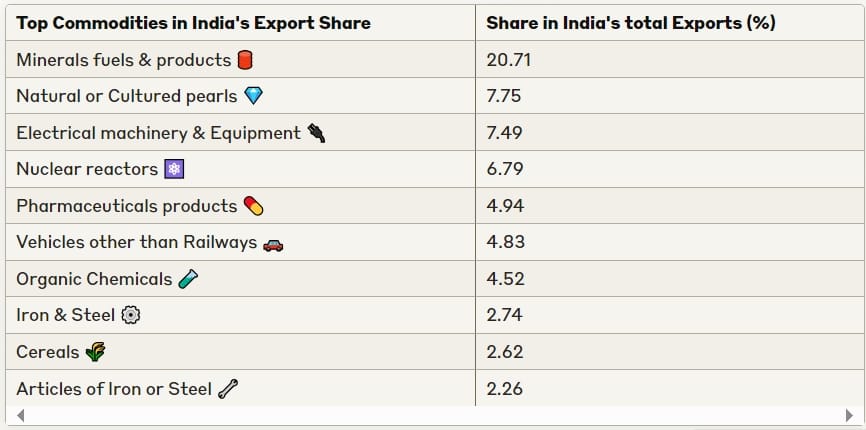India’s economic growth has slowed down to 5.4% in the second quarter of FY25, a significant drop from last year’s 8.1%. This indicates a weakening economy.
In today’s volatile economic landscape, understanding the intricate mechanisms of economic downturns is crucial. The economic cycle reveals a complex interconnection of factors that can rapidly transform market conditions, creating a self-reinforcing spiral of decline.
Key Stages of Economic Contraction
1. Low Consumption: The Initial Trigger
- Consumer spending drops significantly
- Households become more conservative with their finances
- Discretionary spending is the first to be cut
2. Reduced Business Revenue
- Companies experience immediate revenue pressures
- Profit margins shrink
- Business investment and expansion plans are put on hold
3. Low Demand: Market Contraction
- Reduced consumer spending creates a market-wide demand vacuum
- Businesses struggle to maintain previous revenue levels
- Supply chain disruptions become more pronounced
4. Decreased Production
- Manufacturing and service sectors scale back operations
- Inventory management becomes critical
- Efficiency and cost-cutting become primary business strategies
5. Job Cuts: Employment Uncertainty
- Companies initiate workforce reductions
- Unemployment rates begin to rise
- Skilled workers face increased job market competition
6. Reduced Consumer Confidence
- Psychological impact of economic uncertainty takes hold
- Consumers become more risk-averse
- Future economic expectations turn negative
Cyclical Nature of Economic Downturns
The most critical aspect of this economic cycle is its self-reinforcing nature. Each stage amplifies the previous one, creating a feedback loop that can be challenging to break without external interventions.
Low Consumption → Low Demand → Low Production → Job Cuts → Reduced Consumer Confidence → Even Lower Consumption

Potential Mitigation Strategies
Economic Policy Interventions
- Targeted fiscal stimulus
- Monetary policy adjustments
- Support for small and medium enterprises
Individual and Business Adaptations
- Diversifying income streams
- Building emergency financial reserves
- Investing in skill development
- Maintaining operational flexibility
Understanding this economic cycle provides valuable insights for individuals, businesses, and policymakers. While economic downturns are inevitable, preparedness and adaptability can significantly reduce their impact.
Key Takeaways
- Economic cycles are interconnected and self-reinforcing
- Consumer confidence plays a crucial role in economic health
- Proactive strategies can help mitigate economic contraction
- Flexibility and adaptability are essential in uncertain economic times


